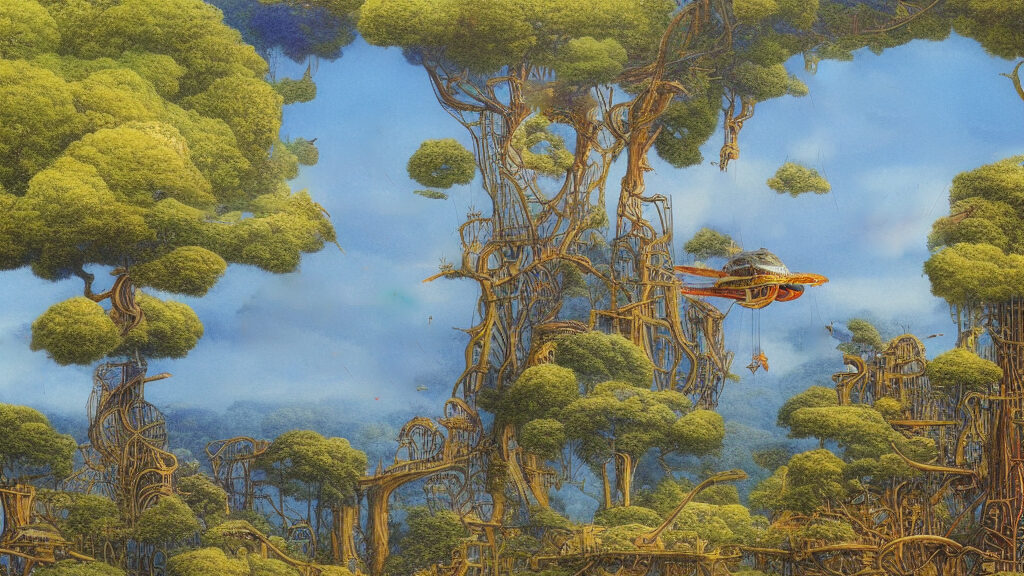Electronic music is music created with electronic instruments, such as synthesizers, samplers, drum machines and other devices. It was born in the 20th century.
Initially, electronic instruments were used by contemporary classical music experimentalists and sound effects specialists for science fiction movies. The first synthesizers were enormous and costly devices. Musicians didn’t own this equipment. Instead, they used labs that were set up at universities, broadcasting networks and other locations.
Early Pioneers and Inventors
German composer, musician and sound explorer Karlheinz Stockhausen was a key pioneer of electronic music. He was one of the first musicians that experimented with sampling, directional sound, and using live electronic performance. Stockhausen used the electronic music lab at German broadcasting network WDR built in 1951. At the time, this studio was used by many of Europe’s electronic music composers.
The BBC’s Radiophonic Workshop opened in London in 1958, establishing a home for British composers. Simultaneously, the large RCA Mark II was built at Columbia University in New York in 1957.
Don Buchla was an American trailblazer in the field of sound synthesis. He designed and sold modular synthesizers starting in 1963. He was co-inventor of the voltage controlled modular synthesizer together with Robert Moog.
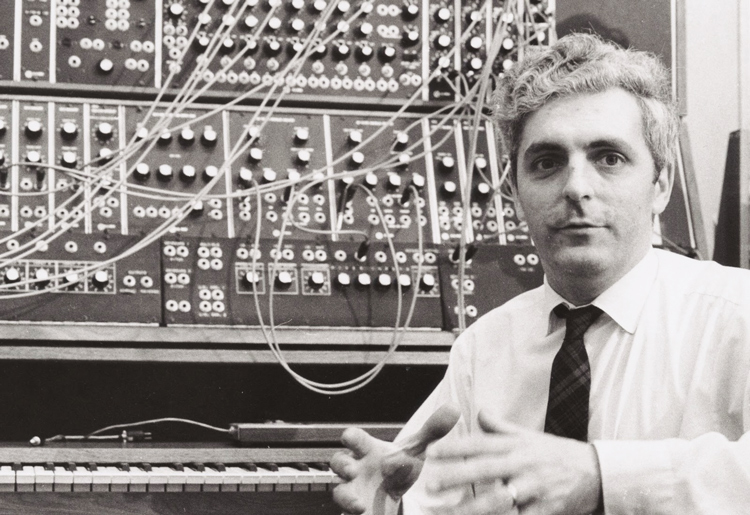
Robert Moog was an American engineering physicist and innovator of electronic music. He was the founder of musical instrument company Moog Music and the inventor of the first commercial synthesizer, the Moog synthesizer, which appeared in 1964.
Robert Moog collaborated with various musicians and artists to develop the new musical instruments. These included composer Herb Deutsch, Richard Teitelbaum, Vladimir Ussachevsky, Wendy Carlos, Alwin Nikolais and John Cage.
1970s: the Birth of New Genres
In the late 1960s and early 1970s, thanks to innovations like the Moog synthesizer, electronic instruments became popular with rock musicians who were experimenting with psychedelia, progressive rock and jazz. During that period, the portable and easy to carry Minimoog synthesizer and the Mellotron sampler became popular among progressive rock and jazz fusion keyboard players and enjoyed by progressive music fans.
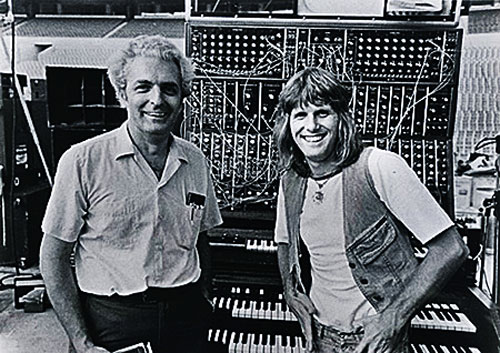
In the 1970s, a series of innovative genres were developed using electronic instruments. In Germany, a new style appeared, known as Kosmische Musik or cosmic music, which later received various other names such as floating music, space music, or even ambient.
Some of the leading exponents of Kosmische Musik include German musicians Klaus Schulze, Tangerine Dream, Ash Ra Tempel, Michael Hoenig, Manuel Göttsching, Cosmic Jokers, Harald Grosskopf; former Gong members Steve Hillage and Tim Blake, from the UK; and some of the early works by Greek synthesist Vangelis.
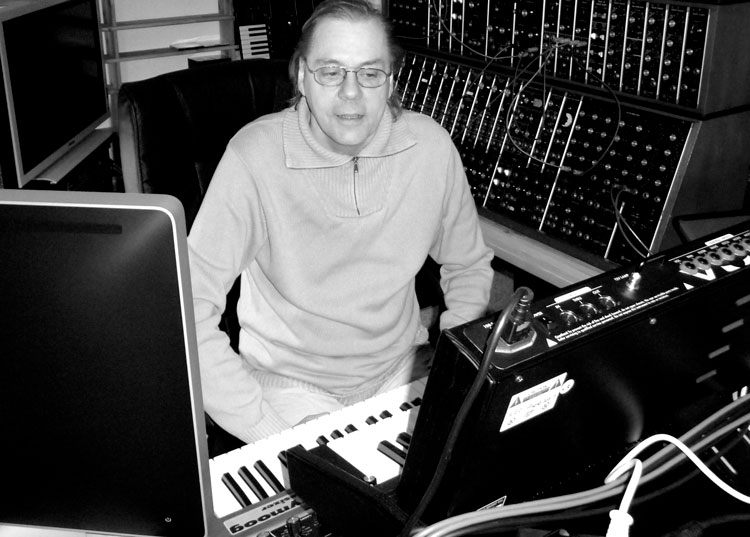
The first electronic music hit was a song called “Popcorn” released in 1972 by American instrumental band Hot Butter, led by keyboardist Stan Free, using the Moog synthesizer. The song, composed by Gershon Kingsley became an international hit.
In the mid-1970s, Brian Eno pioneered a new genre that he called ambient music. The iconic “Ambient 1: Music for Airports” was released by Polydor Records in 1978.
A melodic electronic style was also developed in the 1970s by artists in various countries. The most popular were Vangelis and Frenchman Jean-Michel Jarre.
Separately, another electronic music movement took place in Germany. Instead of space explorations, musicians were fascinated by technology and industry. This machine-like sound came from Germany’s industrial areas. Some of the essential acts in this category include early Kraftwerk, Neu and Faust. These German musicians inspired the movements that later became known as techno and industrial.
From the UK and the USA came techno. Unlike the previous experimental genres, techno sought to bring electronic music to the masses by using pop structures such as catchy melodies and dance beats.
Eventually, electronic music gave way to a wide range of musical styles, ranging from music for listening to high energy dance music.
In the 1990s, two American publications focused on the progressive side of electronic music. Dreams Word was published by Electronic Dreams, am organization of listeners and musicians for electronic music, which they also called esotronic music. Dreams Word was published by Elana Mell Beach. It featured exclusive interviews, news, reviews, commentaries, and classifieds.
The other publication was Synthesis. This publication featured interviews, reviews, news and articles. Synthesis was published by Jason Marcewicz in Philadelphia.
Electronic Music Genres
The list of electronic music genres is quite extensive and subjective. This is a list of some of the best known electronic music genres:
Acid
Acid, also known as acid house, is an evolution of house music towards crackly, repetitive and hallucinogenic sounds originally made with the Roland TB-303 bass synthesizer. Originally developed by Chicago DJs in the 1980s, including Nathan “DJ Pierre” Jones, Earl “Spanky” Smith Jr., and Herbert “Herb J” Jackson.
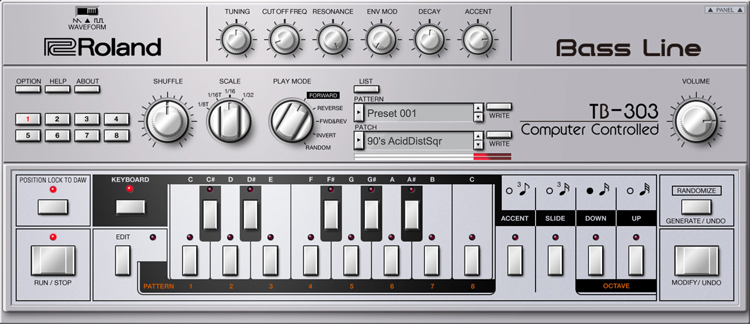
Ambient
Evocative, atmospheric and expansive electronic music style. The term ambient music was created by British musician Brian Eno. Currently, the term ambient is used for many forms of electronic music that mostly lack rhythms or sequences, including the floating side of Berlin School electronic music, drone music, chill-out, dark ambient, downtempo, new age and space music.

Berlin School
This is another name for Kosmische Musik: electronic music style characterized by complex sequencer patterns and electronic atmospheres. It was originally developed by West Berlin-based German musicians and bands such as early Tangerine Dream, Klaus Schulze, Edgar Froese, AshRa Tempel and Manuel Gottsching.
Berlin-style electronic jumped to other European countries and the United States. Essential international artists include Steve Roach (USA), Robert Rich (USA), Ron Boots (Netherlands), John Kerr (UK), Neuronium (Spain), Pascal Languirand (Canada) and new waves of German musicians such as Bernd Kistenmacher, Mario Schonwalder, Detlev Keller, Bernhard Wöstheinrich, Volker Lankow, Dutch artist Bas Broekhuis, and Venga (Belgium).
Breakbeat
This rhythm was originally used by R&B and funk pioneer James Brown in the song “Funky Drummer.” It is one of the most used samples and became the base rhythm for hip hop music. In the UK, breakbeat is a techno variation.
Chill Out
Although some artists describe their music as chill out, this genre is basically an umbrella term for slow tempo, laid back electronic music played after frenzied raves, or fast speed electronic music, to take a break and relax.
Deep House
Deep house has soul and disco influences. It was very popular in the late 1980s and early 1980s, especially in New York, New Jersey and Chicago.
Drum and Bass
An evolution of jungle with a strong focus on bass.
Dub
Electronic music genre derived from reggae, consisting of remixes of existing recordings. Pioneers include Osbourne “King Tubby” Ruddock, Lee “Scratch” Perry, Errol Thompson.
Electronic Body Music (EBM)
Derived from industrial rock, EBM mixes sequenced repetitive bass lines, machine-like dance beats, disco and predominantly undistorted vocals. It emerged in western Europe in the 1980s. Belgian band Front 242 pioneered the genre.
Electro
Combination of Afro-rooted rhythms using the Roland TR-808 drum machine and European electronic music. It appeared in Europe in the 1980s. Leading acts include: Afrika Banbaataa, West Street Mob and Whodini.
Electronic Dance Music (EDM)
Umbrella term for a wide range of electronic music genres designed for dancing. These include house, techno, trance, dubstep, drum & bass, garage, etc,
Ethno Ambient
A combination of ambient electronic music and world music rhythms. Also known as ethnic ambient, global electronica, folktronica, and tribal ambient. Leading artists include Jon Hassell, Steve Roach, Vidna Obmana, Robert Rich, Banco de Gaia, Ulf Söderberg and Antonio Testa.
Hardcore
The fastest and most industrial side of techno with a distorted beat. In some parts of the world, this genre is known as machine. It appeared in western Europe in the 1990s. Pioneers included Mescalinum United, L.A. Style and Human Resource.
House
This rhythm has become the foundation for a lot of electronic dance music. It was developed in Chicago in the mid-1980s. The name comes the Warehouse club, where Frankie Knuckles worked as a DJ. This genre is rooted in African-American funk, disco and European techno. Subgenres include deep house, Afro House, funky house, disco house, acid house, bass house, big room house, Chicago house, Latin house, French house, tech house, future house, tropical house, and progressive house.
Industrial
This genre appeared in the late 1970s inspired by the sounds of machines, metallic sounds and urban noise. Pioneers included Throbbing Gristle, SPK and Test Dept.
Jungle
Jungle surfaced in the UK. It is an accelerated version of breakbeat and became very popular in London. Jungle is frequently mixed with soul, ambient and raggamuffin.
Kosmische Musik
Kosmische Musik, also known as cosmic, space, floating and gliding music was developed by German musicians in the 1970s. It is part of the Berlin School. Tangerine Dream, Klaus Schulze, AshRa Tempel and Manuel Gottsching
Krautrock
Krautrock is the name given to a series of progressive music genres that developed in Germany in the early 1970s, including experimental rock, psychedelic and progressive rock and Berlin-style electronic music known as Kosmische Musik or cosmic music. Tangerine Dream, Klaus Schulze, AshRa Tempel and Manuel Gottsching
New Age
New Age became an umbrella term in the 1990s for electronic music genres that tended to be melodic and easy to listen to. Although he predated new age music, Japanese keyboardist and composer Kitaro was one of the biggest selling new age artists.
Symphonic Electronic Music
This genre includes classical music performed with electronic keyboards as well as original compositions with classical music influences. Essential artists: Wendy Carlos, Tomita, Vangelis, and Constance Demby.
Techno
The term techno has several meanings. To some, techno is electropop or technopop. Kraftwerk was one of the pioneers or technopop. To others, techno is an electronic dance music genre that appeared in the late 1980s and early 1990s, derived from German electropop and house music.
Other Genres
The list of electronic music genres and subgenres is very long and subjective. Additional genres include trance, electrorock; garage or UKG; hard step; jump-up, tech-step; hardcore; happy hardcore; ragga; Balearic, and darkside.
